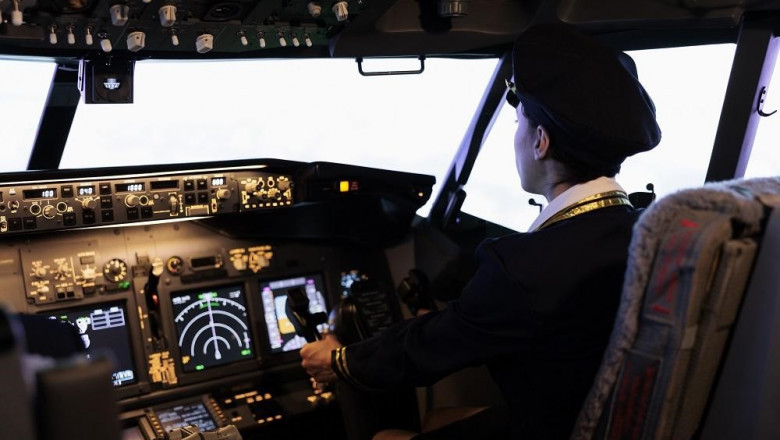views
The flight simulator market has evolved significantly over the years, transitioning from rudimentary mechanical devices to sophisticated, high-fidelity virtual environments that replicate real-world flying experiences. This evolution has been driven by advancements in technology, increasing demand for pilot training, and the need for cost-effective and safe training solutions. As the aviation industry continues to grow, the flight simulator market is poised for substantial expansion, with new opportunities emerging in both civil and military sectors.
According to BISResearch, The global flight simulator market is evaluated at a valuation of $8.77 billion in 2024 and is projected to expand at a CAGR of 7.06% to reach $17.34 billion by 2034.
Key Drivers in Flight Simulator Market
- Rising Demand for Pilot Training: The aviation industry is experiencing a surge in demand for new pilots, driven by the expansion of commercial airlines and the growth of air travel. According to Boeing’s Pilot and Technician Outlook, the industry will need over 600,000 new pilots in the next two decades. Flight simulators play a crucial role in meeting this demand by providing effective training solutions.
- Technological Advancements: Innovations in simulation technology, such as enhanced graphics, artificial intelligence, and virtual reality (VR), have significantly improved the realism and effectiveness of flight simulators. These advancements enable more comprehensive training programs and better preparedness for real-world scenarios.
- Cost-Effective Training Solutions: Flight simulators offer a cost-effective alternative to traditional in-flight training. They reduce the need for actual flight hours, saving on fuel, maintenance, and operational costs. Additionally, simulators allow for repeated practice of complex and emergency procedures without the risks associated with real flights.
- Regulatory Requirements: Aviation authorities worldwide mandate the use of flight simulators for pilot certification and recurrent training. These regulations ensure that pilots receive standardized and rigorous training, further driving the demand for advanced simulators.
Flight Simulator Market by Platform
- Commercial Aviation
- Military Aircraft
- Unmanned Aerial Vehicle (UAV)
Request A Detailed Sample on Flight Simulator Market!
In addition, leading firms like CAE Inc., L3Harris Technologies, Airbus, and Boeing are ramping up their investments in groundbreaking technologies to optimize their operations and stay ahead in the market. These efforts center on incorporating advanced technologies like artificial intelligence, machine learning, and augmented reality into their systems. These innovations aim to boost the efficiency and precision of their flight simulators while cutting costs and broadening training capacities to address the increasing global need for skilled aviation professionals.
Future Outlook
The future of the flight simulator market looks promising, with continuous advancements in technology and increasing demand for efficient training solutions. Emerging trends such as the integration of artificial intelligence, machine learning, and immersive reality technologies are expected to further enhance the capabilities of flight simulators.
Moreover, the growing focus on sustainability and reducing carbon footprints in aviation will drive the adoption of simulators as a more environmentally friendly training option. The development of new aircraft models and the need for specialized training will also create opportunities for simulator manufacturers.
Some of the prominent companies in this market are:
- CAE Inc.
- L3Harris Technologies, Inc.
- Thales SA
- Flight Safety International
- Boeing
- Airbus S.A.S
- Download Our ToC: Click Here!
Conclusion
The flight simulator market is set to soar, driven by the need for skilled pilots, technological innovations, and cost-effective training solutions. As the aviation industry continues to expand, flight simulators will play an increasingly vital role in ensuring the safety, efficiency, and preparedness of pilots worldwide. With ongoing advancements and growing demand, the market is poised for significant growth and transformation in the years to come.






















Comments
0 comment